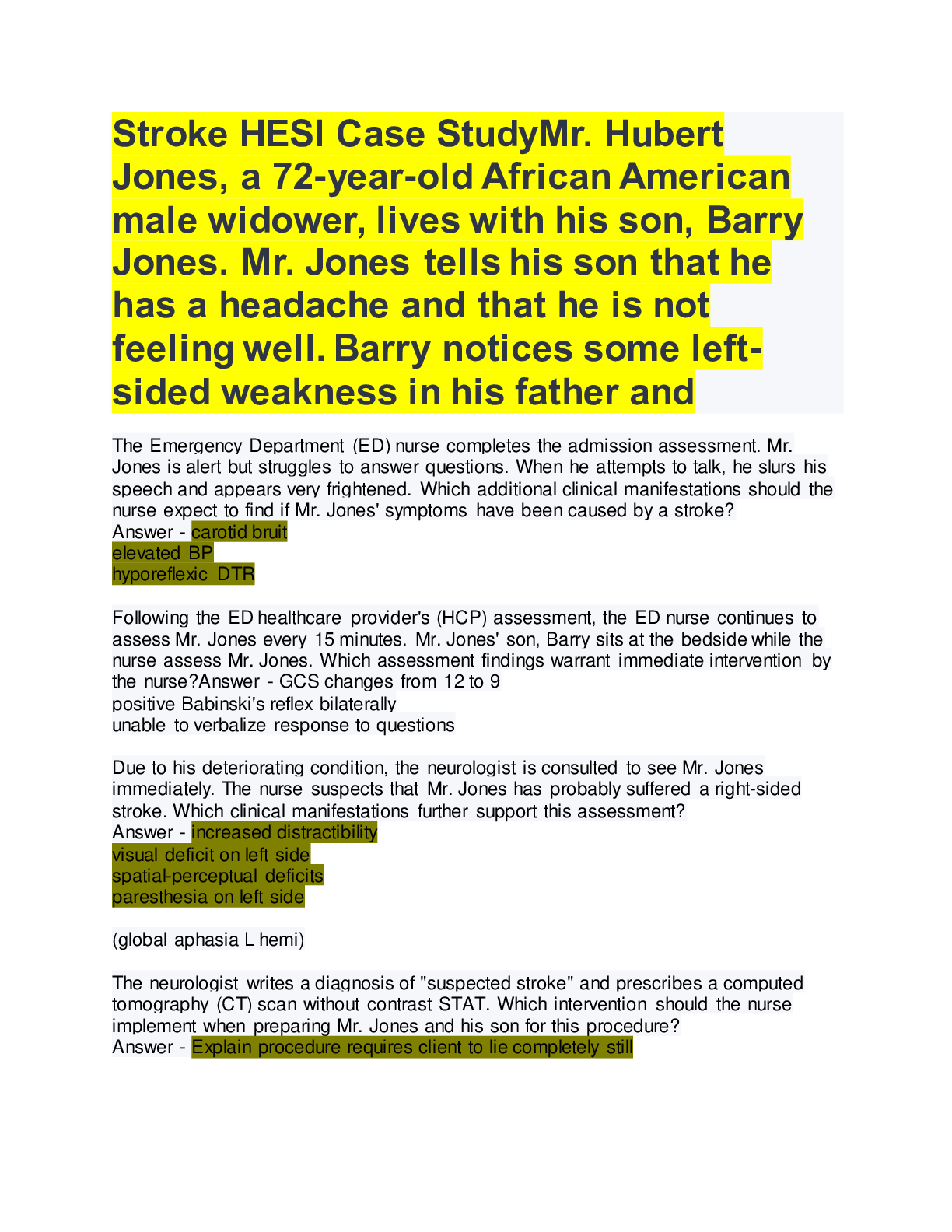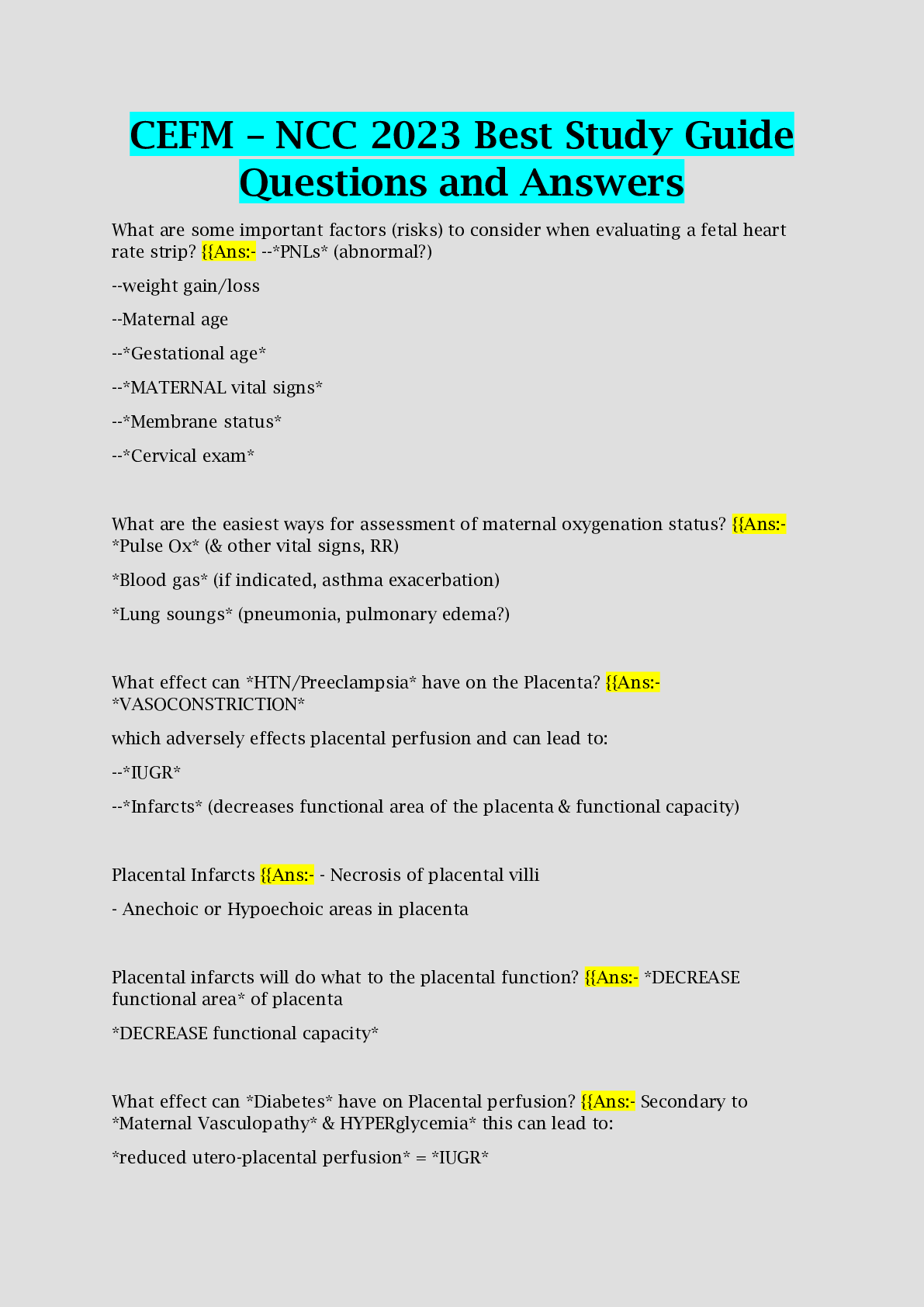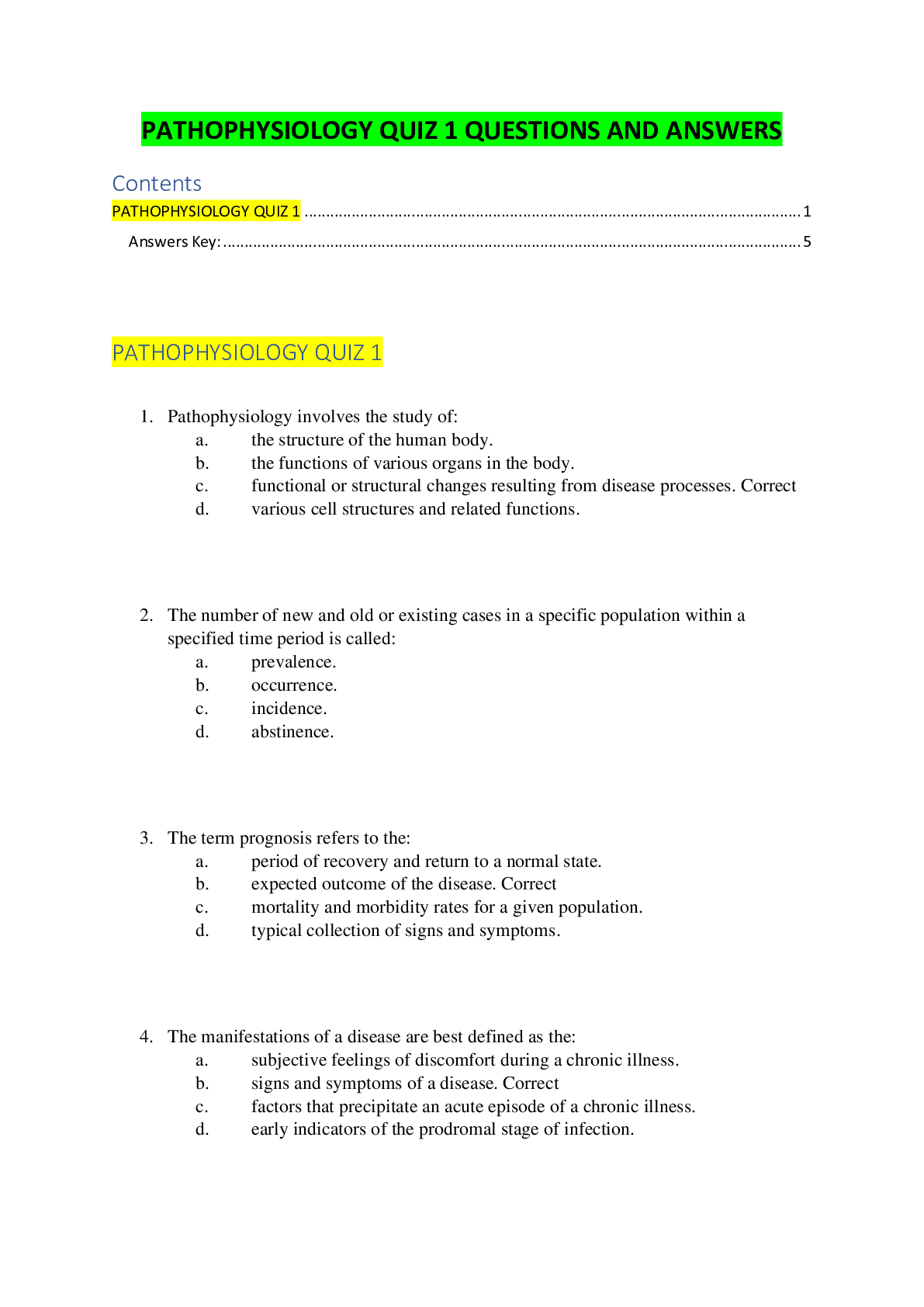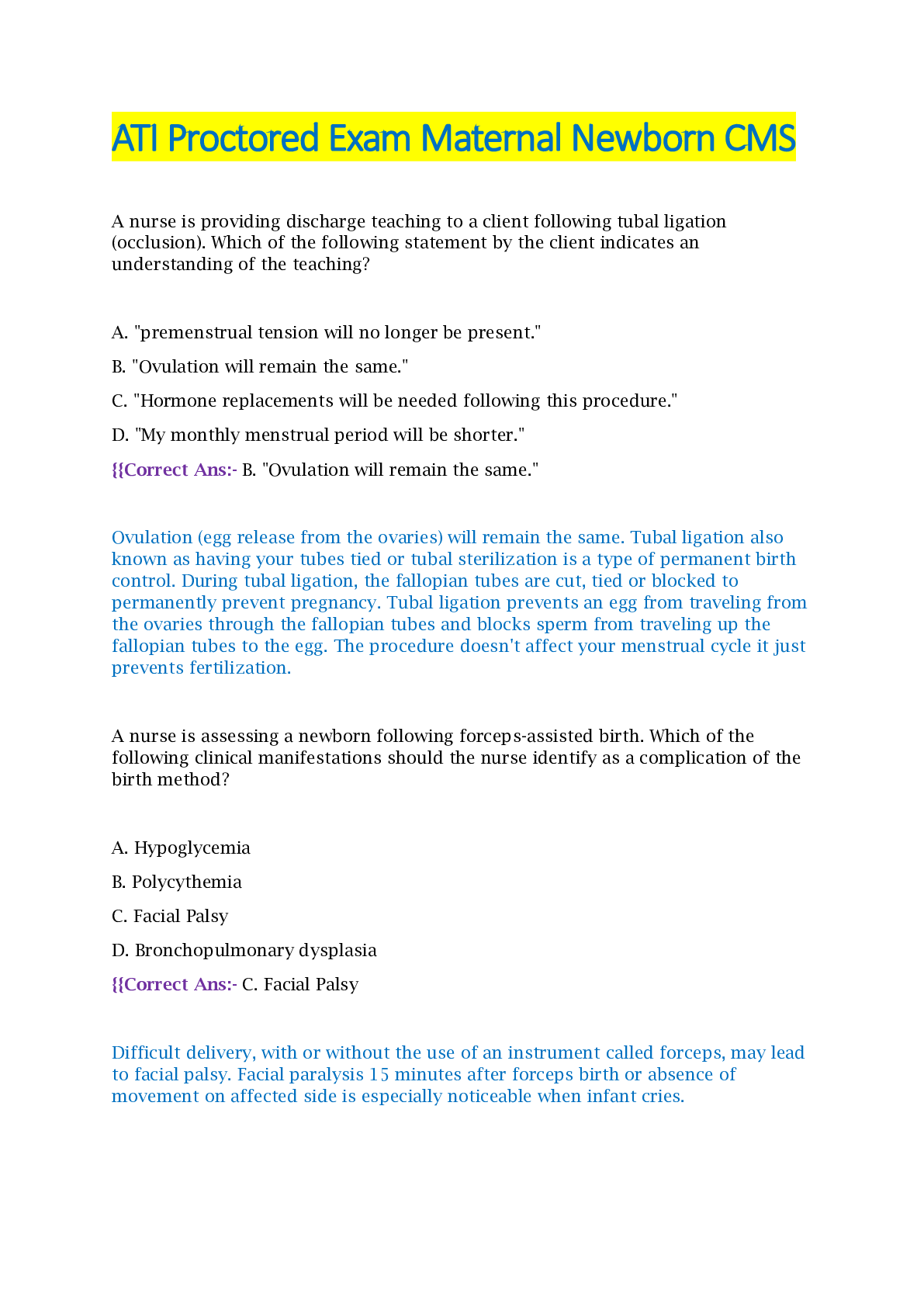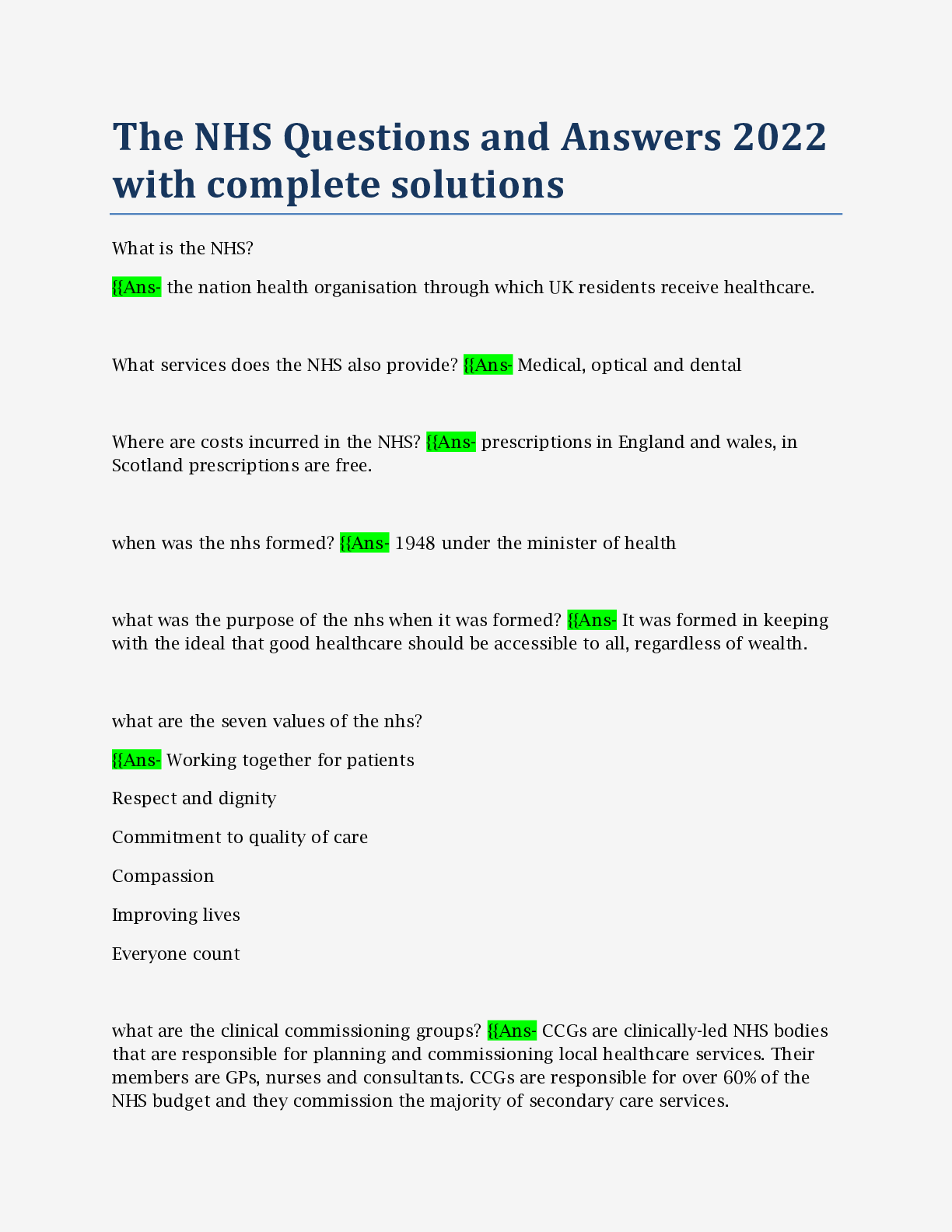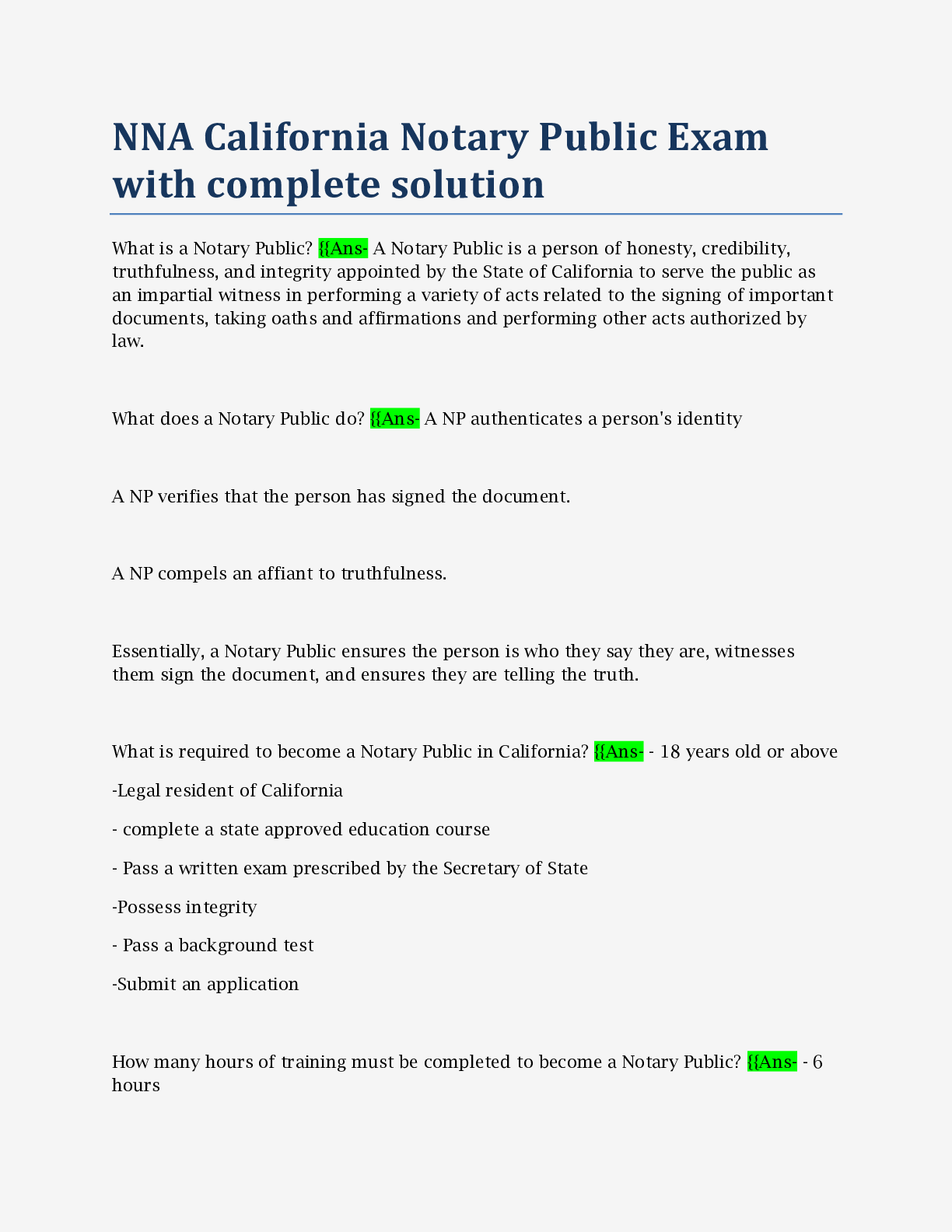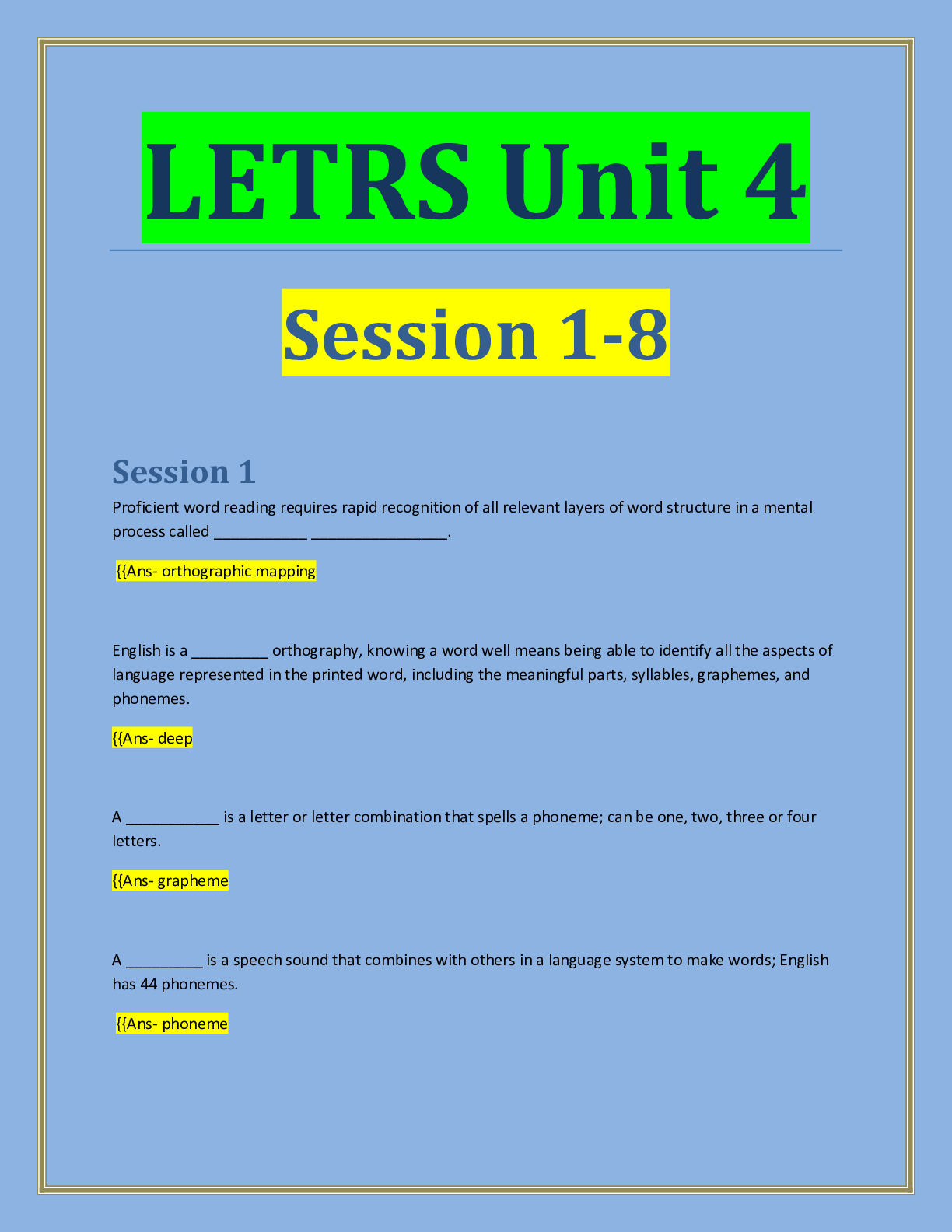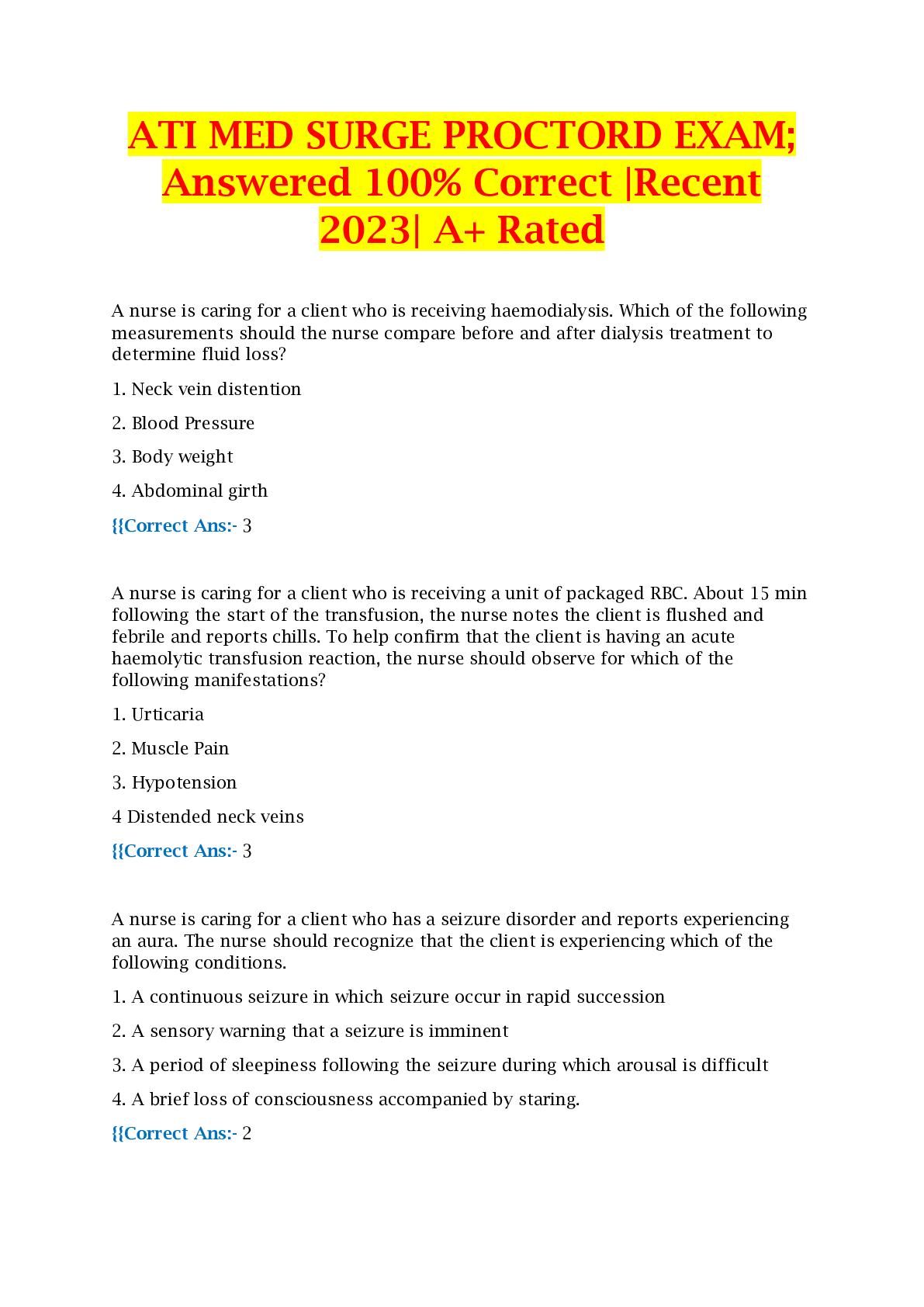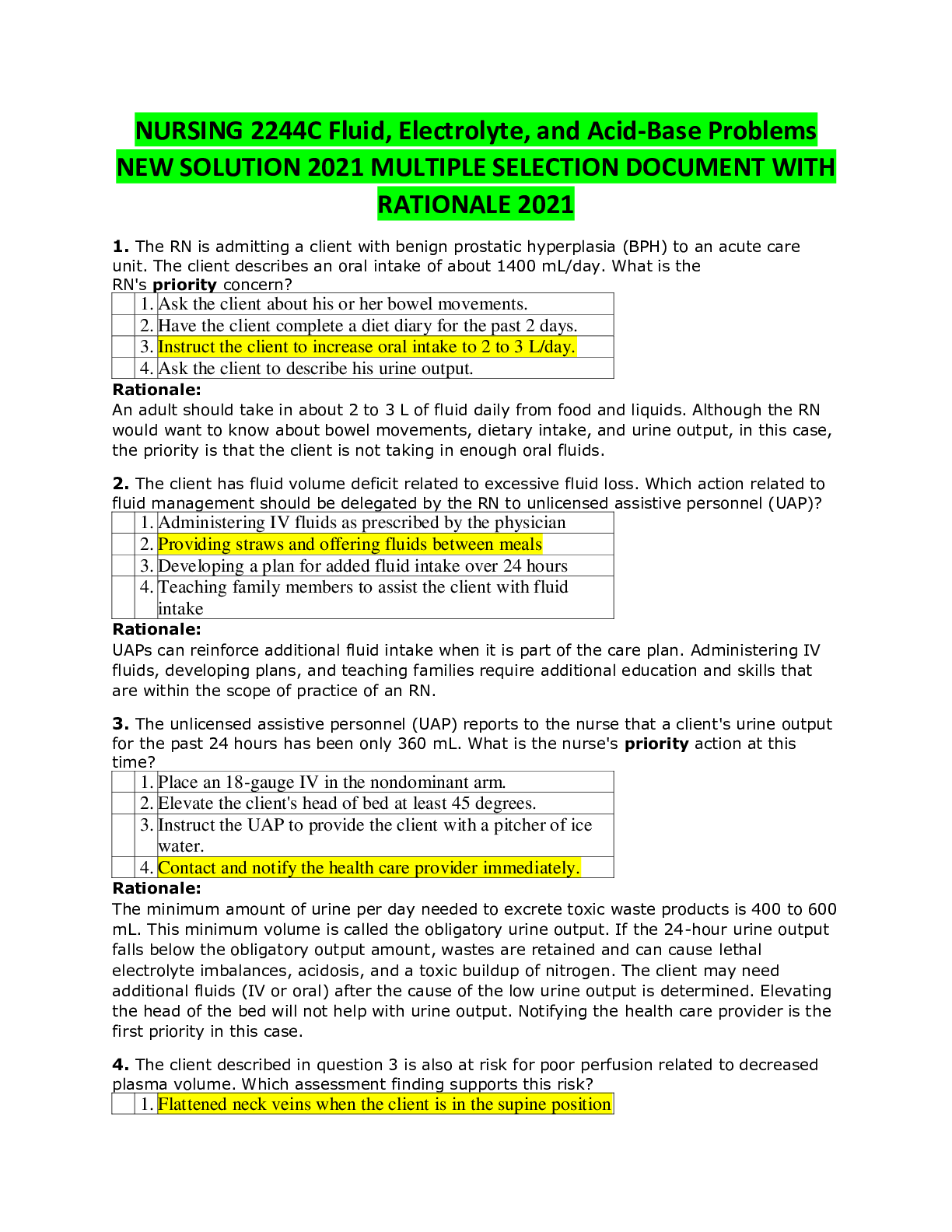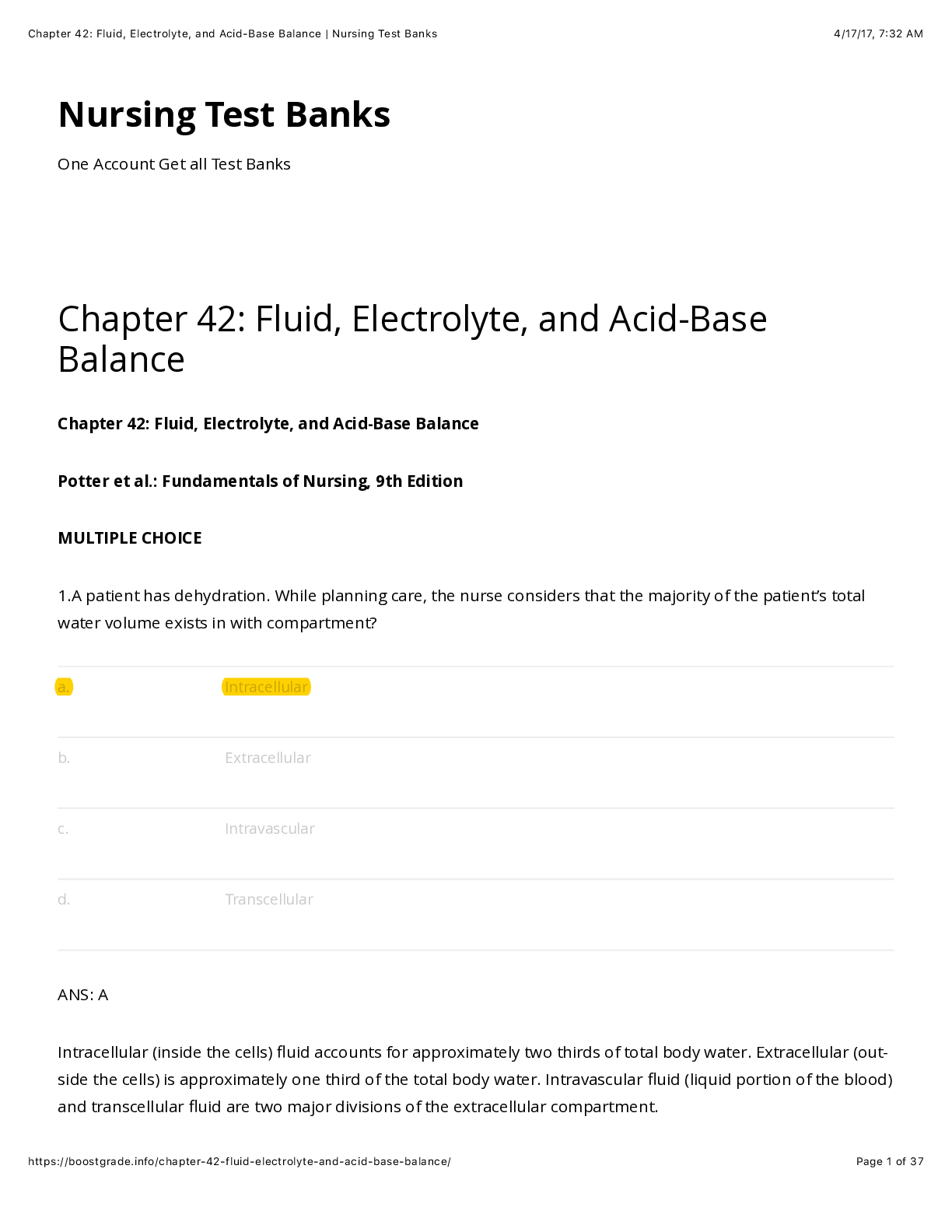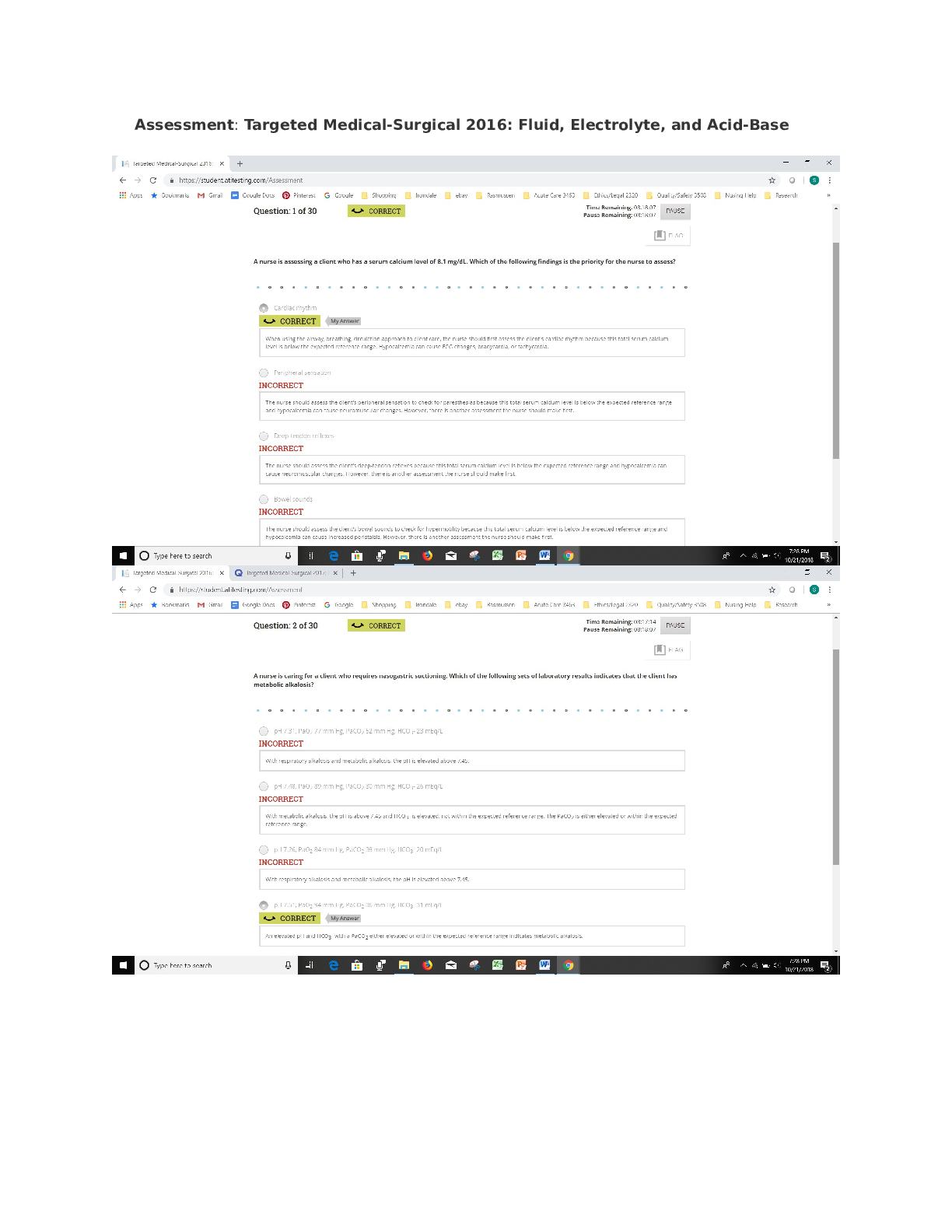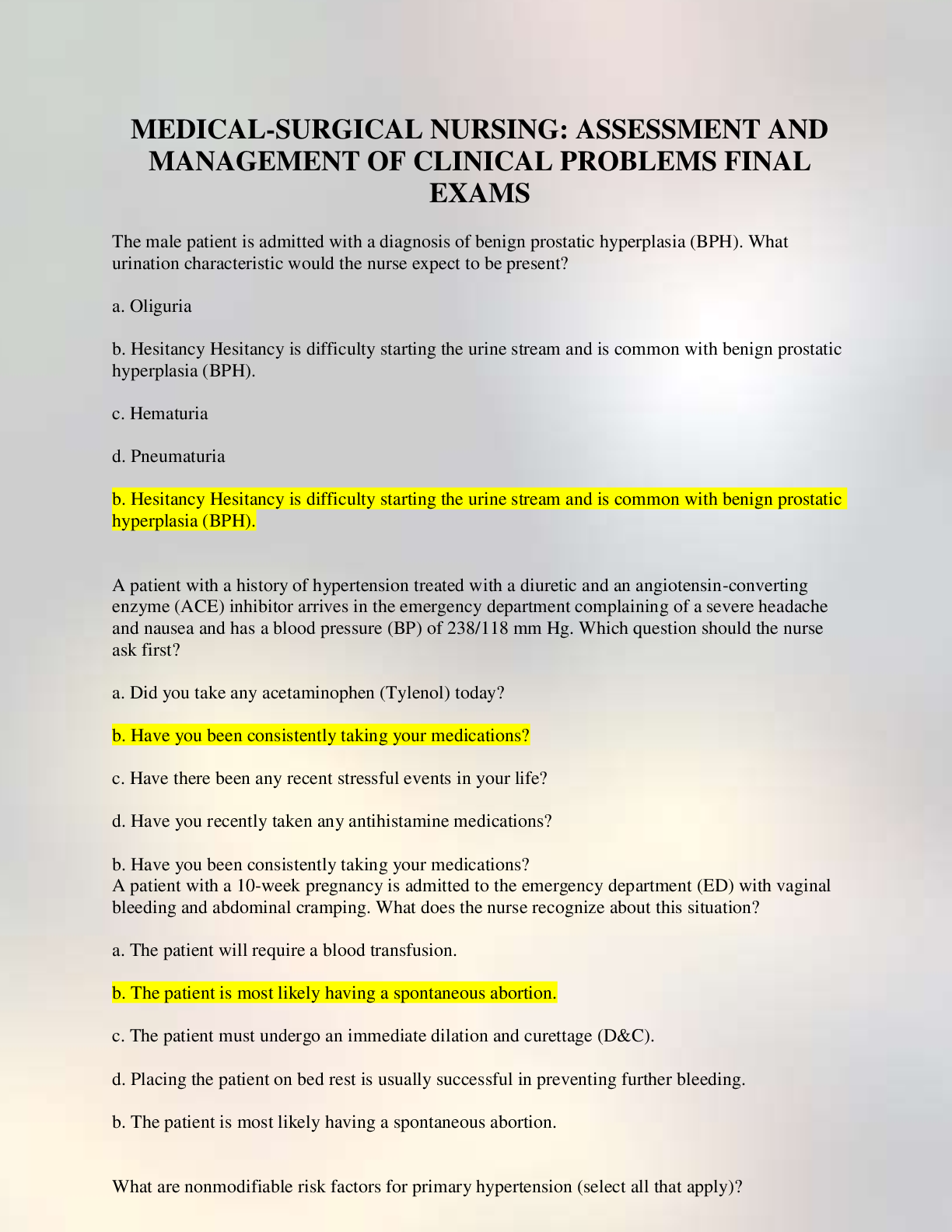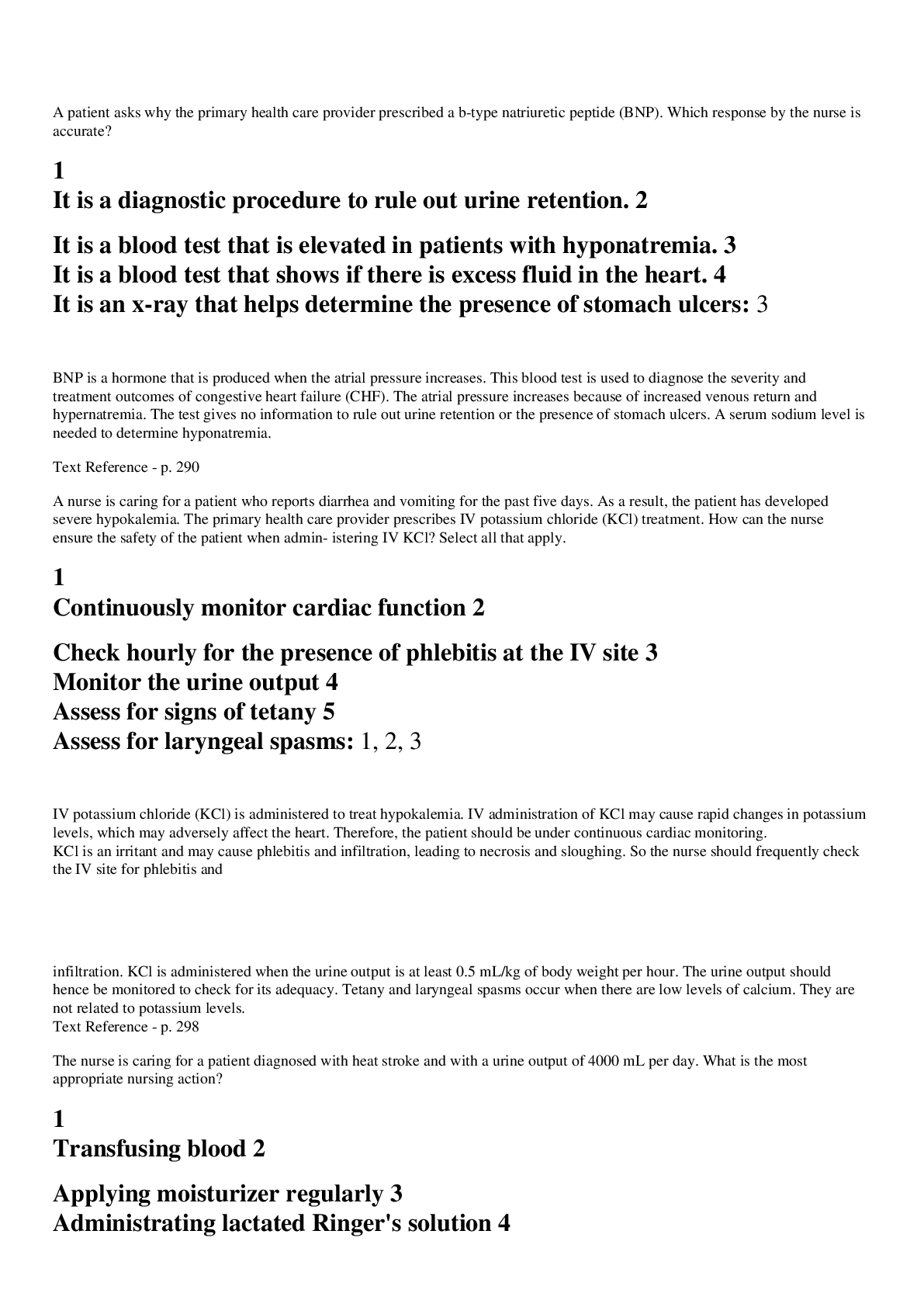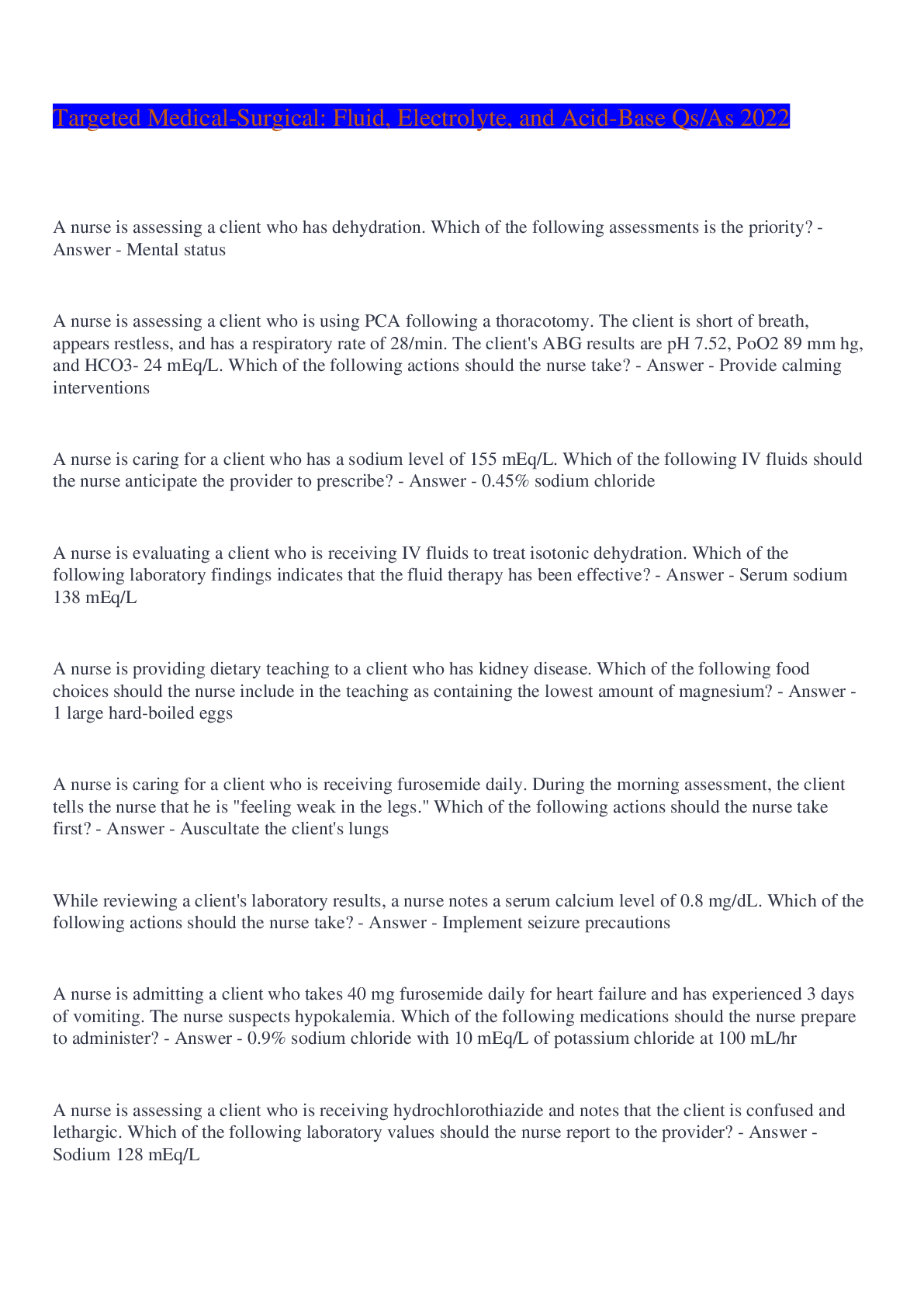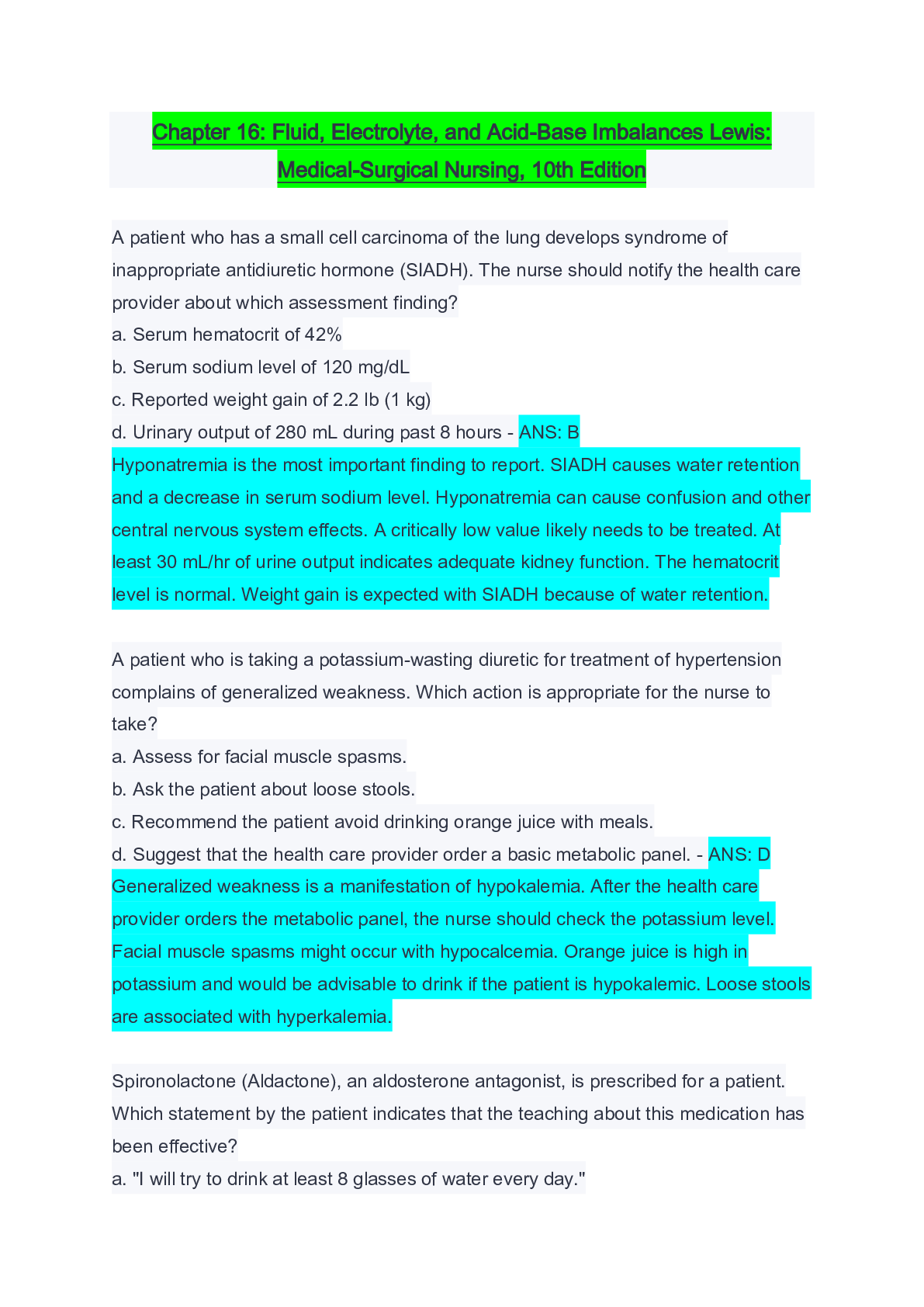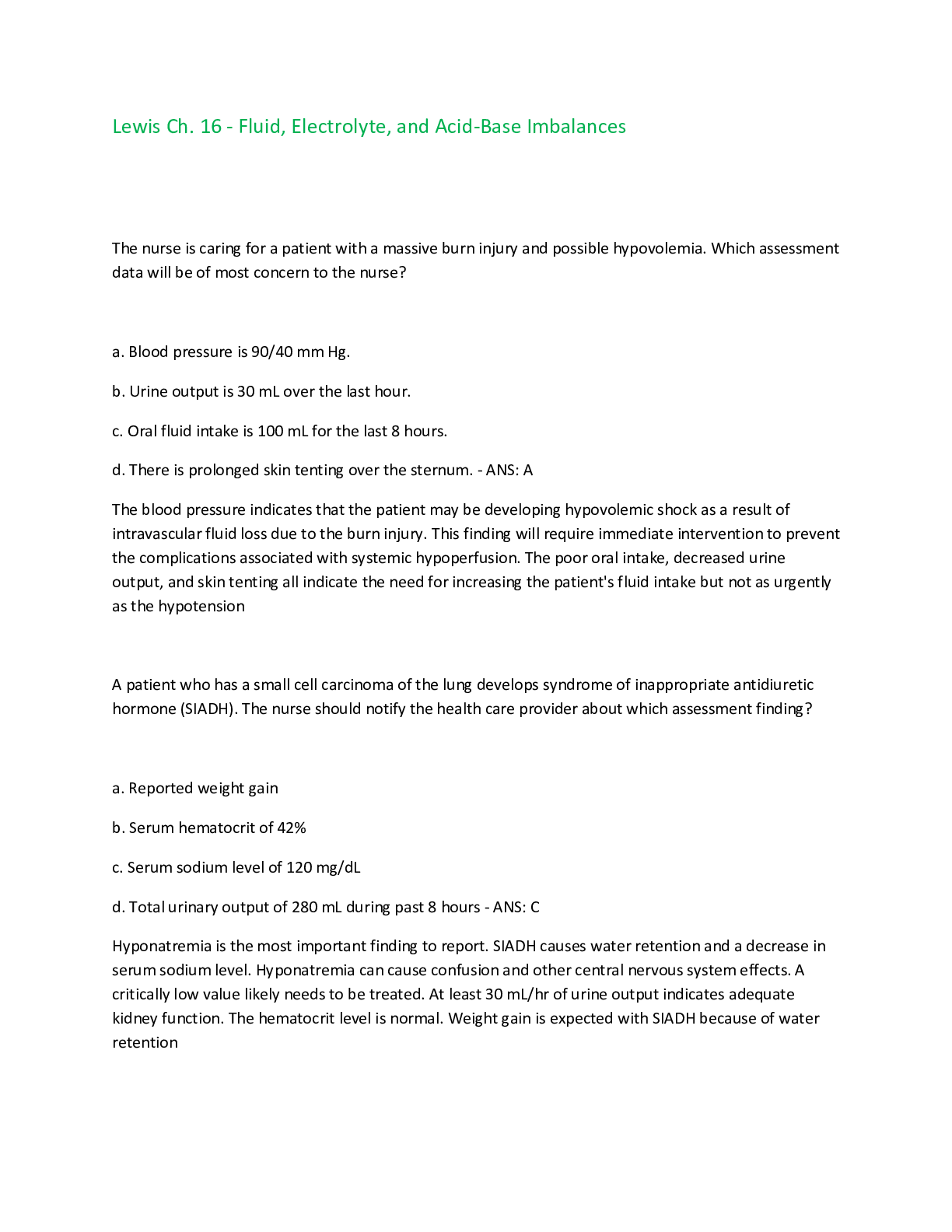Health Care > EXAM > Assessment Targeted Medical-Surgical Fluid, Electrolyte, and Acid-Base/ATI Fluid, Electrolyte, and A (All)
Assessment Targeted Medical-Surgical Fluid, Electrolyte, and Acid-Base/ATI Fluid, Electrolyte, and Acid-Base Targeted Exam Questions and Answers + Rationale
Document Content and Description Below
Assessment Targeted Medical-Surgical Fluid, Electrolyte, and Acid-Base/ATI Fluid, Electrolyte, and Acid-Base Targeted Exam Questions and Answers + Rationale A nurse is assessing a client who has a s... erum calcium level of 8.1 mg/dL. Which of the following findings is the priority for the nurse to assess? -Deep tendon reflexes -Cardiac rhythm -Peripheral sensation -Bowel sounds [Correct Ans:- Cardiac rhythm When using the airway, breathing, circulation approach to client care, the nurse should first assess the client's cardiac rhythm because this total serum calcium level is below the expected reference range. Hypocalcemia can cause ECG changes, bradycardia, or tachycardia. A nurse is caring for a client who requires nasogastric suctioning. Which of the following sets of laboratory results indicates that the client has metabolic alkalosis? -pH 7.51, PaO2 94 mmHg, PaCO2 36 mmHg, HCO3- 31 mEq/L -pH 7.48, PaO2 89 mmHg, PaCO2 30 mmHg, HCO3- 26 mEq/L -pH 7.31, PaO2 77 mmHg, PaCO2 52 mmHg, HCO3- 23 mEq/L -pH 7.26, PaO2 84 mmHg, PaCO2 38 mmHg, HCO3- 20 mEq/L [Correct Ans:- pH 7.51, PaO2 94 mm Hg, PaCO2 36 mm Hg, HCO3- 31 mEq/L An elevated pH and HCO3- with a PaCO2 either elevated or within the expected reference range indicates metabolic alkalosis. A nurse is caring for a client who has dehydration and is receiving IV fluids. When assessing for complications, the nurse should recognize which of the following manifestations as a sign of fluid overload? -Increased urine specific gravity -Hypoactive bowel sounds -Bounding peripheral pulses -Decreased respiratory rate [Correct Ans:- Bounding peripheral pulses The nurse should recognize that increased vascular volume results in full, bounding peripheral pulses. A nurse is caring for a client who is experiencing respiratory distress as a result of pulmonary edema. Which of the following actions should the nurse take first? -Assist with intubation -Initiate high-flow oxygen therapy -Administer a rapid-acting diuretic -Provide cardiac monitoring [Correct Ans:- Initiate high-flow oxygen therapy. When using the airway, breathing, circulation approach to client care, the nurse should first administer high-flow oxygen therapy by face mask at 5 to 6 L/min to keep the client's oxygen saturation above 90%. A nurse is admitting a client who takes 40 mg furosemide daily for heart failure and has experienced 3 days of vomiting. The nurse suspects hypokalemia. Which of the following medications should the nurse prepare to administer? -Sodium polystyrene sulfonate 30 g/day -0.9% sodium chloride with 10 mEq/L of potassium chloride at 100 mL/hr -Bumetanide 8 mg/day -100 mL of dextrose 10% in water with 10 units of insulin [Correct Ans:- 0.9% sodium chloride with 10 mEq/L of potassium chloride at 100 mL/hr This IV solution will provide adequate fluid and potassium replacement to offset the losses from vomiting. The typical amount of potassium chloride to administer IV is 5 to 10 mEq/hr and not to exceed 20 mEq/hr. The dilution should be 1 mEq to 10 mL of 0.9% sodium chloride. [Show More]
Last updated: 2 years ago
Preview 1 out of 12 pages
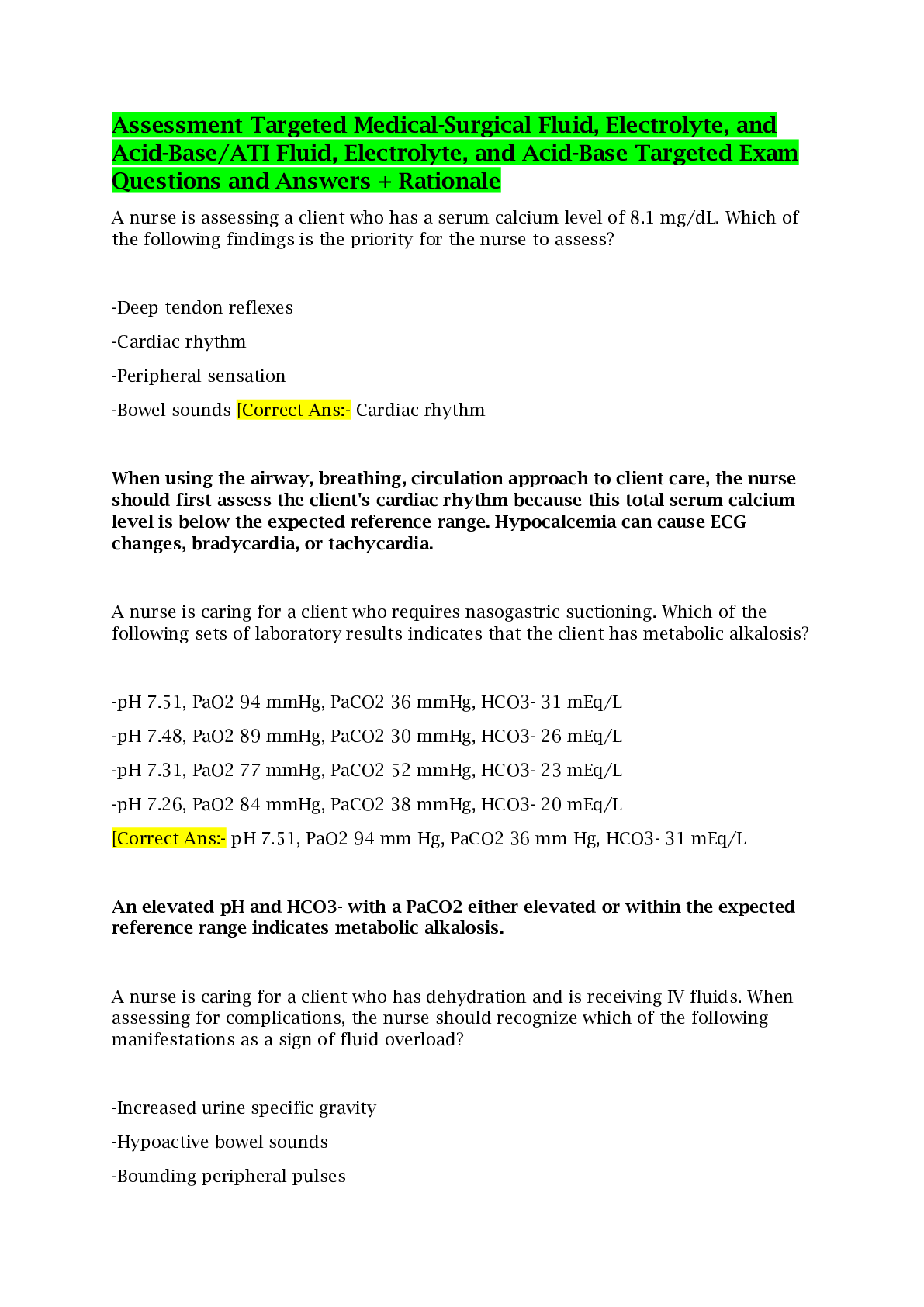
Buy this document to get the full access instantly
Instant Download Access after purchase
Buy NowInstant download
We Accept:

Reviews( 0 )
$8.00
Can't find what you want? Try our AI powered Search
Document information
Connected school, study & course
About the document
Uploaded On
Jul 18, 2023
Number of pages
12
Written in
Additional information
This document has been written for:
Uploaded
Jul 18, 2023
Downloads
0
Views
200

